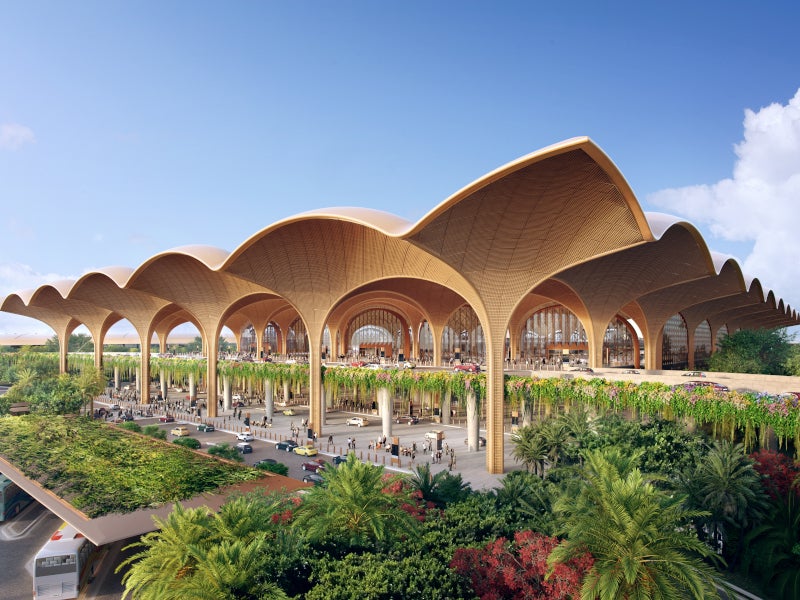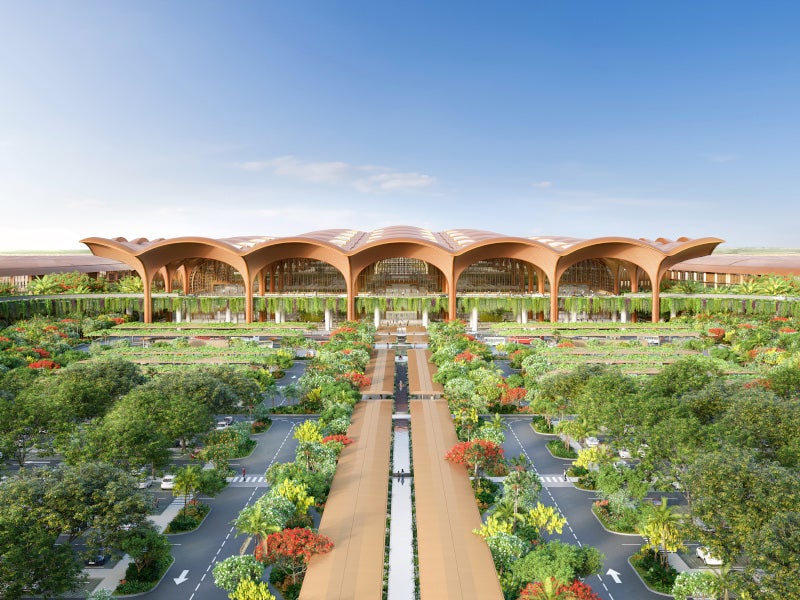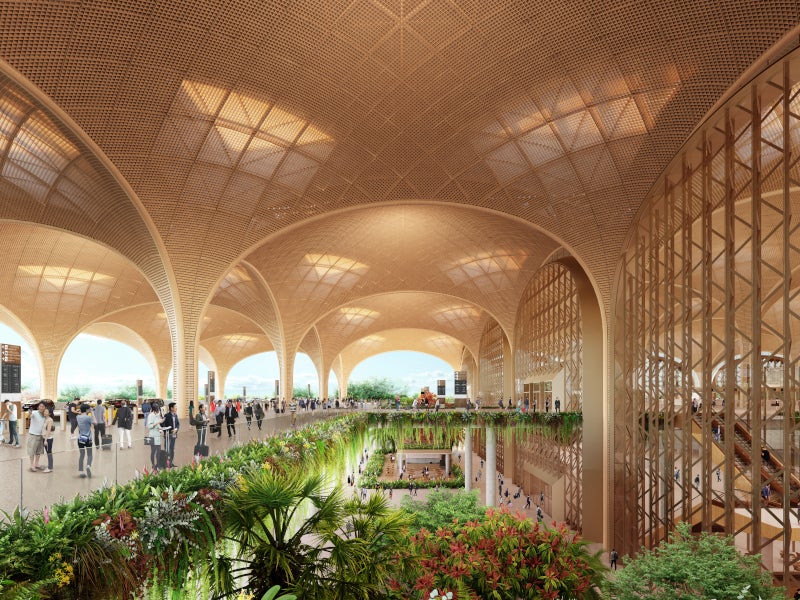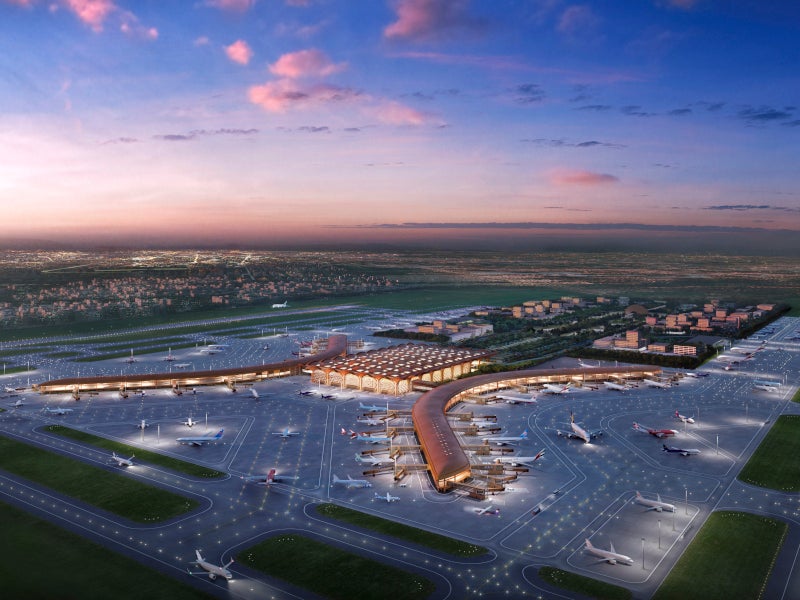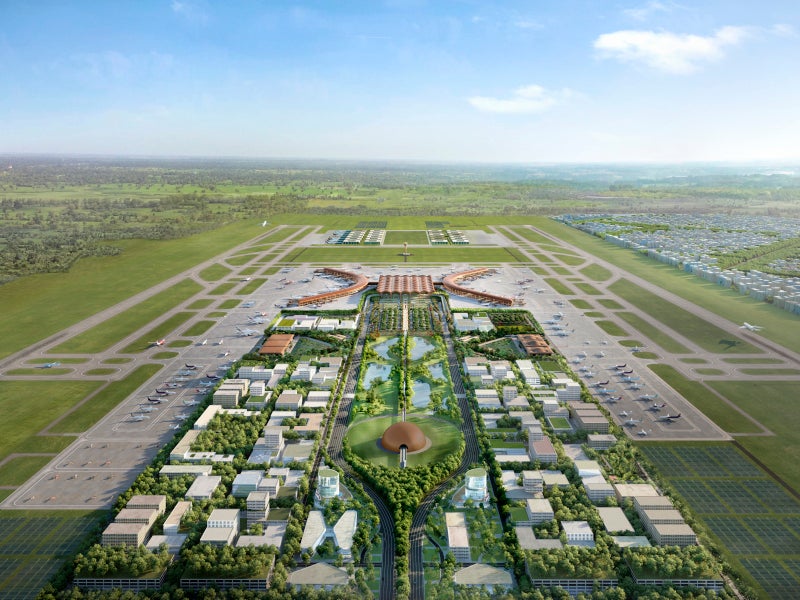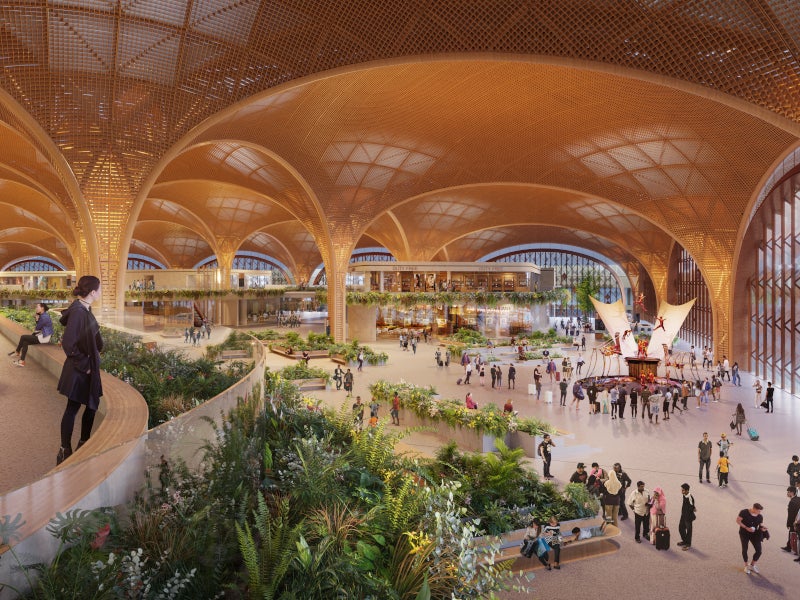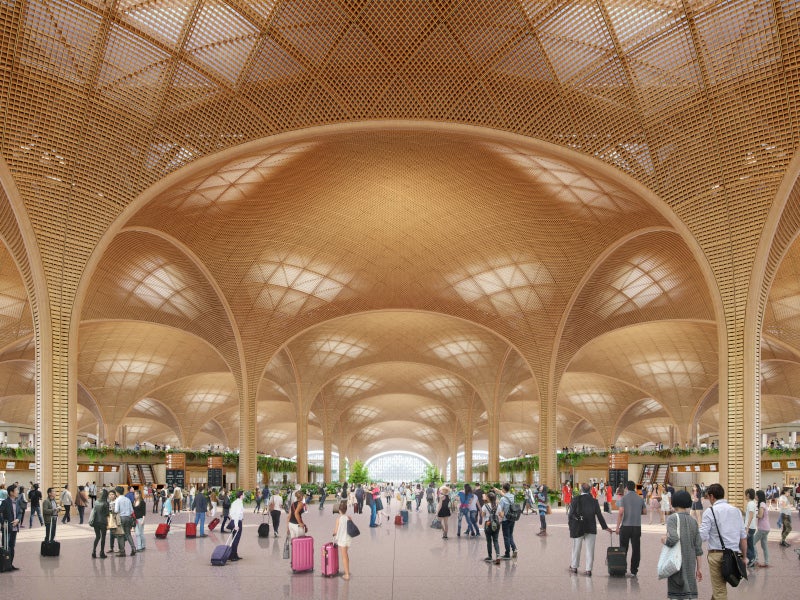Techo Takhmao International Airport is a greenfield airport being built in Phnom Penh, the capital city of Cambodia, by Cambodia Airport Investment Company (CAIC).
It is poised to become a critical component of Phnom Penh’s development as a primary inter-regional transport hub.
CAIC is a joint venture (JV) established between the local real estate conglomerate Overseas Cambodian Investment Corporation (OCIC) and the State Secretariat of Civil Aviation of Cambodia, on a 90:10 ownership basis, to oversee the development, construction, and management of the airport.
The airport will replace the existing Phnom Penh International Airport for commercial flights while the old airport will continue to be used for domestic flights and as a military airbase.
It will rank as the ninth largest airport globally upon completion
The project was announced in January 2018 and is being developed in three phases.
The total investment for the project is estimated at $1.5bn, excluding the cost of land. Construction on the project commenced in 2019.
The Cambodian prime minister named the airport Techo Takhmao during a site visit in December 2021.
The name ‘Techo’ honours the historical Cambodian military commanders Techo Meas and Techo York, who were prominent in the Kandal Province.
The new airport is anticipated to be operational by the first half of 2025.
Location
The airport site is situated in Kandal Province, specifically in the Kandal Steung district. approximately 30km to 40km south of Phnom Penh’s city centre, on former farmland and land reclaimed from a lake.
The total land allocated for the airport covers 2,600ha, with 700ha dedicated to infrastructure.
Techo Takhmao International Airport details
Techo Takhmao International Airport will feature four floors and will include a passenger terminal spanning an area of more than 240,000m².
It will be classified as a 4F-level airport, the highest level in the world.
The terminal will feature 22 gates, with capacity for 40 mid-size aircraft. It will include a central head house and aerofoil wings, which will offer views out to the 189ha apron.
The airport will also feature three parallel runways and a 118m air traffic control (ATC) tower.
A power supply centre and 19 other essential buildings such as a VIP passenger terminal, wastewater station, solid waste station, vehicle repair station, fuel storage station, storage station, fire projection station, and power substation will also be part of the airport.
A new road will connect the airport to a 60m road, including an 11.7km road and two concrete bridges across Stung Prek Tnaot.
The airport will be connected to the capital by a motorway and eventually an elevated integrated rail line.
Techo Takhmao International Airport design
The layout of the terminal building is inspired by the traditional Cambodian headdress adorned by Apsara dancers and mirrors the headdress’ top three points. The building’s two identical half-curved piers reflect the side frame of the headgear.
The terminal building’s central head house will be flanked by two aerofoil-shaped piers on each side, designed to minimise walking distances.
The head house centralises passenger processing, security, immigration, and retail facilities under a single expansive roof canopy that extends from the drop-off point to the airside, offering protection from the weather.
The roof canopy is a lightweight steel grid shell supported by 36m span structural trees. It incorporates an innovative screen that modulates daylight and enhances the illumination of the spacious terminal interior.
The terminal’s design prioritises legibility on a human scale, with minimal level changes and clear sightlines to the apron, facilitating intuitive navigation.
The interior design utilises warm, inviting materials that reflect Cambodian traditions in a modern style.
Development phases
The modular design and phased development of the project will improve constructability.
The central head house and the northern aerofoil wings will be built in the first phase of the airport terminal. The first phase is designed to handle 13 to 15 million passengers and around 175,000 tonnes of cargo per year.
Subsequent phases will add a second aerofoil wing to the terminal, increasing the capacity to 30 million passengers by 2030 and up to 50 million by 2050.
The strategic location of the terminal can accommodate potential future expansions.
Sustainability features
The airport terminal will be filled with natural light and feature an abundance of lush greenery, including mature trees that extend through a grand central void while peripheral planting enhances the interior’s aesthetic.
Furthermore, the terminal’s energy requirements will be predominantly met by an on-site photovoltaic farm.
Financing
CAIC is investing $444m in the project, with a CAIC bond coupon rate of 5.5% per annum over three years, guaranteed by OCIC.
FTB, a local bank, invested an additional $10m in January 2022, totalling its investment to $30m in the Techo International Airport Guaranteed Bond through private placement.
Hattha Bank invested $15m in the guaranteed bond through private placement in March 2022.
In April 2022, Prince Bank invested an additional $35m, bringing its total investment in the guaranteed bond to $50m.
AMK Microfinance Institution invested $1m in the guaranteed bond through private placement in May 2022.
In October 2022, five commercial banks, including Cathay United Bank, First Commercial Bank, Mega International Commercial Bank, Taiwan Cooperative Bank, and Union Commercial Bank signed agreements with CAIC to invest more than $23m in guaranteed bonds to support the development of the airport.
Public-listed Thai conglomerate PTT Oil and Retail will invest $100m for the development of an oil depot for refuelling aircraft at the airport.
Contractors involved
The China Construction Third Engineering Bureau Group, a real estate company based in China, is providing construction services for the airport.
Shanghai Baoye Group, an engineering contracting services provider, is responsible for the runway, taxiway, apron, and related infrastructure. A subsidiary of the State Construction Administration of China will also be involved in the project.
Heerim Architects & Planners, an architectural services company based in South Korea, is providing construction management and project management consultant services.
DAIDUNG, a manufacturing, construction, and metals and minerals company, is managing the supply, transport, and erection of the terminal’s roof structure.
Foster + Partners, an architecture company based in the UK, is responsible for the airport design. It approached Minmud, a design and architectural visualisation business in England, to create visuals for the VVIP terminal.
SIA Engineering Company, an aircraft maintenance, repair and overhaul services provider based in Singapore, signed a JV agreement with CAIC to provide line maintenance services at the airport.
SIA Engineering will hold a 51% interest in the JV while the CAIC will hold the remaining 49% stake.
Cana Sino Construction, a construction company, constructed the ATC and handed it over to Cambodia Air Traffic Service in 2022 for equipment installation.
OCIC Group selected a consortium led by Lagardere Travel Retail and HSC Group to manage duty-free services at the airport in January 2024.
SCA, a Vinci Airports subsidiary, will operate the aeronautical services at the airport.

